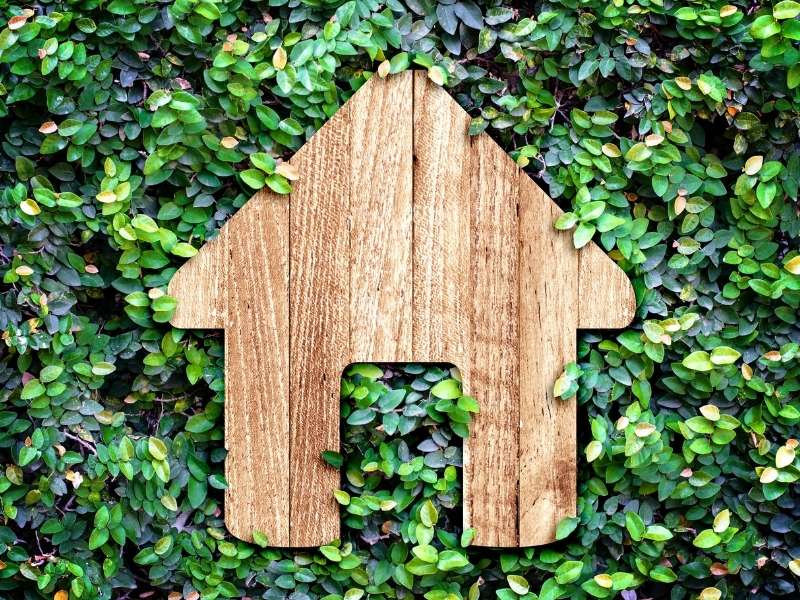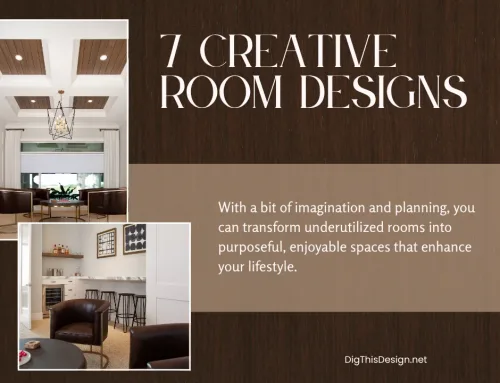Eco-friendly is definitely the “green” design buzz word of the century. When we think of making our homes eco-friendly, the first thing that comes to mind is converting to solar power and using water and electricity more efficiently. However, do you know that your home also becomes more environment-friendly through the materials used in the design?
From the flooring to the kitchen countertops, let’s talk about ways to incorporate eco-friendly materials in your interior design.

1. Eco-friendly Materials For Furniture, Flooring, & Decor
To make a chair or sofa, a tree needs to be cut down. The same is true for wooden flooring. While wood is a natural raw material in use for centuries, it’s not sustainable use at the current rate of consumption. In fact, this activity is now a significant contributor to deforestation.
Instead of using wood, here are some interesting options for a more eco-friendly home for you, your family, and guests.
• Reclaimed Wood
To become more energy-efficient and eco-friendly, there are three main concepts to always keep in mind, as explained by Enviroinc. Those include reduce, reuse, and recycle. This longtime environmental slogan is highly applicable when it comes to wood use.
To apply the second “R” of the famous ‘Three Rs’ slogan, consider reusing reclaimed wood. This is wood that was previously used to make an item. Instead of throwing it away, cut it down to a size that produces something else, such as a coffee table. Even better is that reclaimed wood also works for your flooring.
The more reclaimed wood that is in use, there are fewer trees that get cut down, creating a more sustainable environment.
• Bamboo
Bamboo has many qualities similar to wood. What’s more, bamboo is resistant to pests and mites, which means it can last a long time.
But, do you know that bamboo isn’t a tree but a type of grass? It’s also among the fastest-growing plants on earth. Bamboo, therefore, is useful for furniture as well as flooring. While it takes a few months for the plant to grow, compare it with the time it takes for most hardwood trees to grow. A few months of bamboo’s growth trumps a hardwood’s 50 to 70 years, so imagine the former’s faster growth and replenish rate.
• Bio-Glass
For your kitchen countertops and bathroom sinks, consider using bio-glass, a trendy new material now slowly being incorporated in general home design specifications. It’s made from recycled pieces of glass that are heated, melted, and molded into slabs.
One main benefit of using it is the contribution to having a cleaner environment. Imagine all the glass littering the environment can now be recycled and repurposed in this manner.
• Cork
You can create beautiful furniture as well as elegant flooring with cork. As an example, try envisioning recycled wine corks as make a table or even for your flooring.
The best part of using cork is that no trees are cut down. Cork is retrieved from the bark of the tree, which means that it’s sustainable as the trees simply create new bark over a period of time.
2. Energy-Efficient Finishes
Another great way to make your home eco-friendly is to use environment-friendly paints and finishes. Whether it’s the varnish for your furniture or paint for your walls, look for products that don’t contain harmful substances, such as volatile compounds. These compounds evaporate at room temperature and pollute the air. They are very unhealthy to breathe and might cause issues such as kidney damage.
You are safer with water-base paints, non-biocide paints, as well as milk paints. Furthermore, avoid products with biocides and fungicides as these can harm you and the environment.
3. Energy-Efficient Light Bulbs
Many of us understand that we’re doing the environment a favor by reducing our energy consumption. One of the best and simplest ways that we do this is by installing LED light bulbs.
LED light bulbs use up to 75% less energy than regular incandescent bulbs and significantly bring down your energy consumption. But, the best part is that you don’t have to change your light fixtures. Instead, simply install them in your existing pendant lights, as well as your chandeliers.
4. Using Bioethanol Fuel
Have you evaluated your heating system lately and how it affects the environment? First off, if you’re using an old-fashioned chimney, warm air could escape through the channel while also allowing cold air to get into the house. This results in inefficient heating, thus increasing your monthly energy bills.
Meanwhile, other people use gasoline to warm their homes. While effective, it does give off a lot of carbon dioxide as a byproduct, endangering your health. Thus, a better option for you and the environment is bioethanol. This fuel can be obtained from plant sources, specifically from glucose that comes from sugarcane and molasses. It’s just as effective at warming your home while giving off significantly fewer amounts of carbon dioxide.
5. Making the Most Of Natural Light
Another highly effective way for an eco-friendly home interior is to let in natural light from the outside into your home. Depending on where you live, you can get up to 12 hours of daylight regularly, meaning you don’t have to use electricity or heating that much.
When you have a more open-space type of home layout, natural light is a good option to enhance your space. By letting in sunlight, you’ll be able to both illuminate your home interior while also warming up the house. It will help you reduce your monthly energy bills while also reducing your carbon footprint.
6. Choosing Upcycled or Recycled Furnishings
Another way to reduce the number of trees being cut down is by using upcycled or recycled furnishings. Many eco-friendly furniture designers are now sourcing sustainable items and refashion them as new pieces. This upcycling method has been in vogue in recent years.
Recycling, though, has been present for decades. Hand-me-downs could also be considered as recycling, if you’re not choosy. For example, if your grandparents gave you antiques, you could jazz them up and give them a new life. The great thing is that antique furniture works well in modern house designs, incorporating both the old and the new.
Final Thoughts
Installing solar panels and reducing energy consumption in your home are just some of the ways that you can have an eco-friendly home and show your care for the environment.
In addition, you’re also reducing your carbon footprint through your interior design choices. If you don’t know where or how to start, the above tips could be an excellent roadmap to guide your eco-friendly home journey.
Do you have other suggestions? If so, we’d love to hear from you in the comments below. You will also find more links that take you to excellent articles about all things design for your home and business.
Images Courtesy of Canva.
10 Tips for Sustainably Redecorating Your Home
Green Home Ideas: How To Choose The Best Eco-Friendly Items For Your Home





